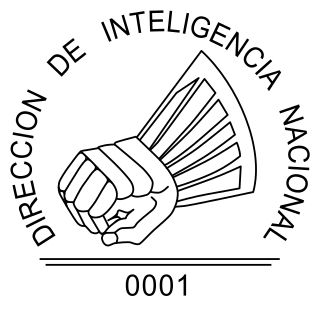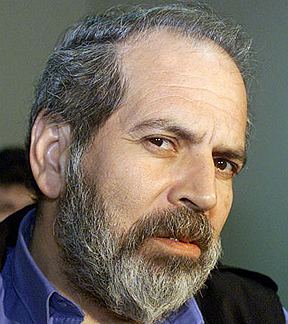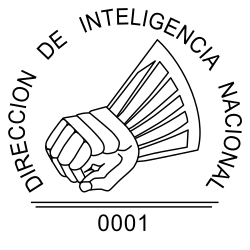
Marcos Orlando Letelier del Solar was a Chilean economist, politician and diplomat during the presidency of Salvador Allende. A refugee from the military dictatorship of General Augusto Pinochet, Letelier accepted several academic positions in Washington, D.C. following his exile from Chile. In 1976, agents of Dirección de Inteligencia Nacional (DINA), the Pinochet regime's secret police, assassinated Letelier in Washington in a car bombing. These agents had been working in collaboration with members of the Coordination of United Revolutionary Organizations, an anti-Castro militant group.

Operation Condor was a campaign of political repression by the right-wing dictatorships of the Southern Cone of South America, involving intelligence operations, coups, and assassinations of left-wing sympathizers in South America which formally existed from 1975 to 1983. They were backed by the United States and, allegedly, France, Venezuela, and Colombia, who were collaborators and financiers of the covert operations. Condor was formally created in November 1975, when Chilean dictator Augusto Pinochet's spy chief, Manuel Contreras, invited 50 intelligence officers from Chile, Uruguay, Argentina, Paraguay, Bolivia, and Brazil to the Army War Academy in Santiago, Chile. The operation ended with the fall of the Argentine junta in 1983.

The Dirección de Inteligencia Nacional or DINA was the secret police of Chile during the dictatorship of Augusto Pinochet. The DINA has been referred to as "Pinochet's Gestapo". Established in November 1973 as a Chilean Army intelligence unit headed by Colonel Manuel Contreras and vice-director Raúl Iturriaga, the DINA was then separated from the army and made an independent administrative unit in June 1974 under the auspices of Decree 521. The DINA existed until 1977, after which it was renamed the Central Nacional de Informaciones or CNI.

Charles Edmund Lazar Horman was an American journalist and documentary filmmaker. He was executed in Chile in the days following the 1973 Chilean coup d'état led by General Augusto Pinochet, which overthrew the socialist president Salvador Allende. Horman's death was the subject of the 1982 Costa-Gavras film Missing, in which he was portrayed by actor John Shea.

Juan Manuel "Mamo" GuillermoContreras Sepúlveda was a Chilean Army officer and the former head of the National Intelligence Directorate (DINA), Chile's secret police during the dictatorship of General Augusto Pinochet. In 1995, he was convicted of the murder of Chilean diplomat Orlando Letelier in Washington, DC, and sentenced to seven years in prison, which he served until 2001. At the time of his death, Contreras was serving 59 unappealable sentences totaling 529 years in prison for kidnapping, forced disappearance, and assassination.

Colonia Dignidad was an isolated colony established in post-World War II Chile by emigrant Germans which became notorious for the internment, torture, and murder of dissidents during the military dictatorship of General Augusto Pinochet in the 1970s while under the leadership of German emigrant preacher Paul Schäfer. Colonia Dignidad has been described as a "state within a state".
Michael Vernon Townley is an American-born former agent of the Dirección de Inteligencia Nacional (DINA), the secret police of Chile during the regime of Augusto Pinochet. In 1978, Townley pleaded guilty to the 1976 murders of Orlando Letelier, former Chilean ambassador to the United States, and Ronni Karpen Moffitt, Letelier's co-worker at the Institute for Policy Studies. He was sentenced to ten years in prison, serving 62 months. As part of his plea bargain, Townley received immunity from further prosecution; he was not extradited to Argentina to stand trial for the 1974 assassination of Chilean General Carlos Prats and his wife Sofía Cuthbert in Buenos Aires.

The Fatherland and Liberty Nationalist Front was a Chilean fascist, political and paramilitary group that fought against the democratically elected Popular Unity government of Salvador Allende, in Chile.

On 21 September 1976, Orlando Letelier, a leading opponent of Chilean dictator Augusto Pinochet, was assassinated by car bombing, in Washington, D.C. Letelier, who was living in exile in the United States, was killed along with his colleague Ronni Karpen Moffitt, who was in the car with her husband Michael. The assassination was carried out by agents of the Chilean secret police (DINA), and was one among many carried out as part of Operation Condor. Declassified U.S. intelligence documents confirm that Pinochet directly ordered the killing.

Enrique Arancibia Clavel was a Chilean DINA security service agent who assassinated General Carlos Prats and his wife in 1974.
On 6 October 1975, an assassination attempt in Rome, Italy, was carried out against Bernardo Leighton, a former Chilean Christian Democratic vice-president, then in exile. The assassination attempt seriously injured Bernardo Leighton, and his wife, Anita Fresno, leaving her permanently disabled.
Eugenio Berríos Sagredo was a Chilean biochemist who worked for the Dirección de Inteligencia Nacional (DINA). Berríos was charged with carrying out Proyecto Andrea in which Pinochet ordered the production of sarin, a nerve agent used by the DINA. Sarin gas leaves no trace and victims' deaths closely mimic heart attacks. Other biochemical weapons produced by Berríos included anthrax and botulism. Berríos also allegedly produced cocaine for Pinochet, who then sold it to Europe and the United States. In the late 1970s, at the height of the Beagle Crisis between Chile and Argentina, Berríos is reported to have worked on a plan to poison the water supply of Buenos Aires. Wanted by the Chilean authorities for involvement in the Letelier case, he escaped to Uruguay in 1991, at the beginning of the Chilean transition to democracy, and what has been identified as his corpse was found in 1995 near Montevideo.
Carmelo Soria was a Spanish-Chilean United Nations diplomat. A member of the CEPAL in the 1970s, he was assassinated by Chile's DINA agents as a part of Operation Condor. Augusto Pinochet was later personally indicted over this case.
Gerardo Huber Olivares was a Chilean Army Colonel and agent of the DINA, Chile's intelligence agency. He was in charge of purchasing weapons abroad for the army. Huber was assassinated shortly before he was due to testify before Magistrate Hernán Correa de la Cerda in a case concerning the illegal export of weapons to the Croatian army. That enterprise involved 370 tons of weapons sold to the Croatian government by Chile on 7 December 1991, when Croatia was under a United Nations embargo arising from the war in Yugoslavia. In January 1992, Magistrate Correa sought testimony from Huber on the deal. However, Huber may well have been silenced to avoid implicating the Dictator, then-Commander-in-Chief of the Army Augusto Pinochet, who was himself awaiting trial on related charges.

Augusto José Ramón Pinochet Ugarte was a Chilean military officer who was the dictator of Chile from 1973 to 1990. From 1973 to 1981, he was the leader of the military junta, which in 1974 declared him President of the Republic and thus the dictator of Chile; in 1980, a referendum approved a new constitution confirming him in the office, after which he served as de jure president from 1981 to 1990. His time in office remains the longest of any Chilean ruler.
Mariana Inés Callejas Honores was a Chilean writer and member of the Dirección de Inteligencia Nacional (DINA) who participated in several terrorist attacks, including the murder of General Carlos Prats and his wife, which was perpetrated in 1974 in Buenos Aires. She was convicted and sentenced to 20 years in prison by courts of the first and second instances, though her term was later reduced to five years.
The National Information Center was the political police and intelligence body which functioned as an organ of persecution, kidnapping, torture, murder and disappearance of political opponents during the military dictatorship of Augusto Pinochet in Chile. The predecessor of the CNI, the Directorate of National Intelligence (DINA), had been dissolved due to pressure from the United States government as a result of the assassination of Orlando Letelier in exile in Washington in 1977.
Hartmut Wilhelm Hopp was the doctor of the religious sect and commune called Colonia Dignidad in Chile and the right hand of its leader Paul Schäfer, and follower of the teachings of William Branham. Hopp was sentenced by a Chilean court to five years in prison for complicity in child abuse committed by Paul Schäfer, but he fled the country for Germany and, as a German citizen, was not extradited to Chile by the Federal Republic.
The Calle Conferencia Case I and II refer to two covert operations conducted by the DINA, General Pinochet's political police force, aimed at dismantling the leadership of the Communist Party of Chile (PCCh) between May and November–December 1976. Both of these operations were orchestrated by the secretive Lautaro Brigade, whose existence remained concealed until 2007, despite the disputes between Manuel Contreras, the head of the DINA, and former dictator General Augusto Pinochet.









